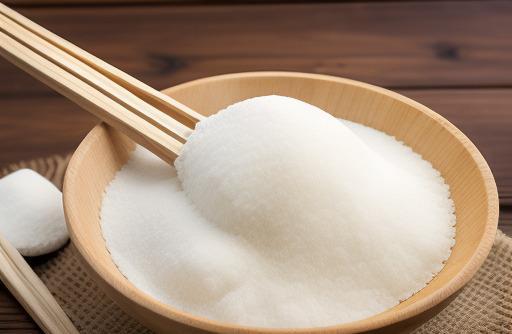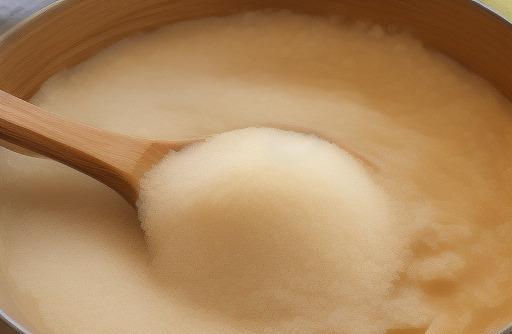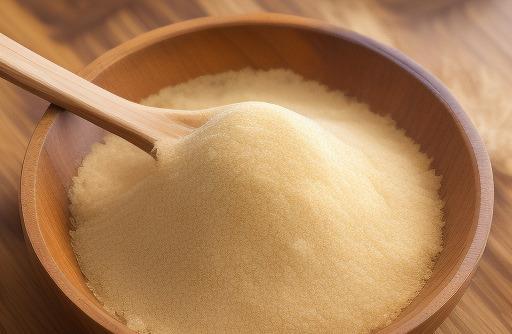- You are here:
- Home »
- Food Substitutes
- » Best Substitutes For Rice Flour
Best Substitutes For Rice Flour

Rice flour is a versatile ingredient that is commonly used in gluten-free cooking. It is made from finely milled rice grains and has a light, powdery texture. However, there are times when you may not have rice flour on hand or may need to avoid it due to dietary restrictions or preferences. In such cases, it is essential to know the best substitutes for rice flour to ensure the success of your recipes.
Key Takeaways
- Rice flour is a gluten-free alternative commonly used in cooking and baking.
- There are several substitutes for rice flour, including almond flour, coconut flour, potato starch, and tapioca starch.
- Each substitute has its unique characteristics and works best in specific recipes.
- When choosing a substitute, consider factors like flavor, texture, and the desired outcome of the final dish.
Why You Need A Substitute For Rice Flour
There are several reasons why you may need to find a substitute for rice flour:
-
Dietary Restrictions: If you or someone you cook for has an intolerance or allergy to rice, using a substitute allows you to create gluten-free or rice-free dishes.
-
Availability: Rice flour may not always be readily available at your local grocery store, especially if you live in a small town or rural area. Having alternative options ensures that you can still create delicious recipes.
-
Texture and Taste: Depending on the recipe, you may find that a different flour provides a better texture or flavor compared to rice flour. Exploring substitutes allows you to experiment and enhance your culinary creations.
Types Of Substitutes For Rice Flour

When searching for a substitute for rice flour, it is essential to consider the desired outcome of your recipe and the characteristics of the different alternatives. Here are a few common substitutes for rice flour:
-
Almond Flour: Made from finely ground blanched almonds, almond flour is a popular gluten-free substitute for wheat flour. It has a slightly nutty flavor and a coarse texture. Almond flour works well in baked goods, giving them a light and delicate crumb.
-
Coconut Flour: Coconut flour is made from dried coconut flesh that has been ground into a fine powder. It has a slightly sweet and nutty taste and works well in both sweet and savory recipes. Since coconut flour is highly absorbent, it is important to adjust the liquid ratios in your recipe when using it as a substitute for rice flour.
-
Potato Starch: Potato starch is a finely ground flour made from the starchy part of potatoes. It is a white, odorless powder that works well as a thickener in sauces, soups, and gravies. Potato starch also adds moisture to baked goods and can be used as a substitute for rice flour in recipes that require a lighter texture.
-
Tapioca Starch: Tapioca starch, also known as tapioca flour, is derived from the cassava root. It is a soft, fine powder that adds a chewy texture to dishes. Tapioca starch works well as a thickener in recipes and can be used as a substitute for rice flour in desserts and baked goods.
Best Substitutes For Rice Flour

The best substitute for rice flour depends on the recipe and the desired outcome. Here are some popular alternatives to rice flour and their recommended uses:
-
Almond Flour:
- Recommended for: Baking recipes, especially cakes, muffins, and cookies.
- Pro tip: To prevent baked goods from becoming too dense or heavy, combine almond flour with a lighter gluten-free flour like tapioca starch in a 1:1 ratio.
-
Coconut Flour:
- Recommended for: Baking recipes, breaded coatings for frying, and thickening sauces.
- Pro tip: Due to its absorbent nature, coconut flour requires more moisture in recipes. For every 1/4 cup of rice flour, use 2 tablespoons of coconut flour and increase the liquid by 1/4 cup.
-
Potato Starch:
- Recommended for: Thickening sauces, gravies, and soups, and adding moisture to baked goods.
- Pro tip: For every 1/4 cup of rice flour, use 2 tablespoons of potato starch as a substitute. Mix it with another gluten-free flour, like almond flour or tapioca starch, for best results in baking recipes.
-
Tapioca Starch:
- Recommended for: Thickening sauces and soups, adding chewiness to desserts, and improving texture in baked goods.
- Pro tip: Replace rice flour with an equal amount of tapioca starch in most recipes. However, for baked goods, combine tapioca starch with another gluten-free flour, like almond flour or coconut flour, for better texture and structure.
Choosing The Right Substitute For Rice Flour

When choosing a substitute for rice flour, consider the following factors:
-
Flavor: Different substitutes have distinct flavors that can impact the taste of your dish. Almond flour adds a nutty taste, coconut flour provides a hint of sweetness, potato starch is flavorless, and tapioca starch adds a slight chewiness. Choose a substitute that complements the flavors in your recipe.
-
Texture: The texture of the substitute should match the desired outcome of your dish. Almond flour creates a lighter and delicate crumb, coconut flour adds density, potato starch thickens sauces and adds moisture, and tapioca starch provides chewiness. Consider what you want to achieve and choose the substitute accordingly.
-
Baking Chemistry: In baking, the choice of flour affects the structure and rise of the final product. Almond flour, coconut flour, potato starch, and tapioca starch have different properties and require specific adjustments in recipes. Understand the baking chemistry of your chosen substitute to ensure successful results.
Cooking With Substitutes For Rice Flour

Cooking with substitutes for rice flour requires a few adjustments to ensure the best results. Here are some general tips when using different substitutes:
-
Almond Flour:
- Substitute with almond flour in a 1:1 ratio for rice flour in baking recipes.
- Since almond flour is denser, consider combining it with a lighter gluten-free flour, like tapioca starch, for better texture.
-
Coconut Flour:
- Use 2 tablespoons of coconut flour for every 1/4 cup of rice flour in recipes.
- Increase the liquid content by 1/4 cup for every 1/4 cup of coconut flour used.
- Coconut flour absorbs moisture quickly, so be careful not to add too much.
-
Potato Starch:
- Replace rice flour with potato starch in a 1:1 ratio in recipes that require thickening or adding moisture.
- Combine potato starch with another gluten-free flour, like almond flour or tapioca starch, for baking recipes.
-
Tapioca Starch:
- Substitute equal amounts of tapioca starch for rice flour in most recipes.
- For better texture in baked goods, combine tapioca starch with another gluten-free flour, like almond flour or coconut flour.
Recipes Using Substitutes For Rice Flour

Here are a few delicious recipes that use substitutes for rice flour:
-
Almond Flour Chocolate Chip Cookies:
- Ingredients:
- 2 cups of almond flour
- 1/2 cup of coconut sugar
- 1/2 teaspoon of baking soda
- 1/4 teaspoon of salt
- 1/4 cup of coconut oil, melted
- 1 teaspoon of vanilla extract
- 1/2 cup of dark chocolate chips
- Instructions:
- Preheat the oven to 350°F (175°C) and line a baking sheet with parchment paper.
- In a bowl, whisk together almond flour, coconut sugar, baking soda, and salt.
- In a separate bowl, mix melted coconut oil and vanilla extract.
- Add the wet ingredients to the dry ingredients and stir until well combined.
- Stir in the dark chocolate chips.
- Drop spoonfuls of dough onto the prepared baking sheet and flatten slightly.
- Bake for 12-15 minutes or until the edges are golden brown.
- Allow the cookies to cool on the baking sheet for 5 minutes before transferring to a wire rack to cool completely.
- Ingredients:
-
Coconut Flour Pancakes:
- Ingredients:
- 1/4 cup of coconut flour
- 1/4 teaspoon of baking powder
- 1/8 teaspoon of salt
- 2 tablespoons of coconut sugar
- 3 eggs
- 1/2 cup of milk
- 1 teaspoon of vanilla extract
- Coconut oil for frying
- Instructions:
- In a bowl, whisk together coconut flour, baking powder, salt, and coconut sugar.
- In a separate bowl, whisk together eggs, milk, and vanilla extract.
- Pour the wet ingredients into the dry ingredients and stir until well combined.
- Heat a non-stick pan over medium heat and lightly grease with coconut oil.
- Scoop 1/4 cup of batter onto the pan for each pancake.
- Cook until bubbles form on the surface, then flip and cook for an additional 1-2 minutes.
- Serve the pancakes with your favorite toppings, such as fresh berries or maple syrup.
- Ingredients:
-
Potato Starch Gravy:
- Ingredients:
- 2 tablespoons of butter
- 2 tablespoons of potato starch
- 2 cups of chicken or vegetable broth
- Salt and pepper to taste
- Instructions:
- Melt the butter in a saucepan over medium heat.
- Stir in the potato starch and cook for 1-2 minutes until lightly golden.
- Gradually whisk in the broth, ensuring no lumps form.
- Bring the mixture to a simmer, stirring continuously, until it thickens.
- Season with salt and pepper to taste.
- Remove from heat and serve the gravy with your favorite meats or vegetables.
- Ingredients:
-
Tapioca Starch Chewy Chocolate Chip Cookies:
- Ingredients:
- 1 cup of tapioca starch
- 1/2 cup of coconut sugar
- 1/2 teaspoon of baking soda
- 1/4 teaspoon of salt
- 1/4 cup of coconut oil, melted
- 1 teaspoon of vanilla extract
- 1/2 cup of dark chocolate chips
- Instructions:
- Preheat the oven to 350°F (175°C) and line a baking sheet with parchment paper.
- In a bowl, whisk together tapioca starch, coconut sugar, baking soda, and salt.
- In a separate bowl, mix melted coconut oil and vanilla extract.
- Add the wet ingredients to the dry ingredients and stir until well combined.
- Stir in the dark chocolate chips.
- Drop spoonfuls of dough onto the prepared baking sheet and flatten slightly.
- Bake for 12-15 minutes or until the edges are golden brown.
- Allow the cookies to cool on the baking sheet for 5 minutes before transferring to a wire rack to cool completely.
- Ingredients:
Storage And Shelf Life Of Substitutes
To preserve the quality of substitutes for rice flour, store them properly:
-
Almond Flour: Almond flour should be stored in an airtight container in the refrigerator or freezer. It can last for up to 6 months in the freezer.
-
Coconut Flour: Coconut flour should also be stored in an airtight container in a cool, dry place. It has a longer shelf life compared to other flours and can last up to 1 year.
-
Potato Starch: Keep potato starch in a tightly sealed container in a cool, dry place. It can last for several years if stored properly.
-
Tapioca Starch: Store tapioca starch in an airtight container in a cool, dry place. It has a long shelf life and can last for several years.
Conclusion
While rice flour is a popular gluten-free alternative, there are various substitutes available to suit different dietary needs and recipe requirements. Almond flour, coconut flour, potato starch, and tapioca starch can be used as excellent replacements for rice flour in various dishes. Consider the flavor, texture, and desired outcome of your recipe when choosing the right substitute. With proper adjustments and experimentation, you can create delicious and gluten-free dishes using these substitutes. Stock up on your preferred substitutes and enjoy the versatility they bring to your cooking and baking endeavors.
Pro tip: When substituting rice flour with almond flour in baking recipes, combine it with a lighter gluten-free flour like tapioca starch in a 1:1 ratio to prevent the end product from becoming too dense or heavy.
FAQS
What Are The Best Gluten-free Substitutes For Rice Flour?
Some gluten-free substitutes for rice flour include almond flour, coconut flour, tapioca flour/starch, potato starch, and sorghum flour. These flours have different textures and flavors, so it’s important to experiment and find the one that works best for your recipe.
Can I Use Cornstarch As A Substitute For Rice Flour?
While cornstarch can be used as a thickener in recipes, it is not a suitable substitute for rice flour in baked goods. Cornstarch has a different texture and won’t provide the same structure as rice flour.
What Is Buckwheat Flour, And Can I Use It As A Substitute For Rice Flour?
Buckwheat flour is a gluten-free flour made from the buckwheat plant. It has a nutty flavor and can be used in a variety of recipes, including baked goods. It can be used as a substitute for rice flour, but it may need to be combined with other flours to achieve the desired texture.
Is There A Low-carb Alternative To Rice Flour?
Yes, there are several low-carb alternatives to rice flour, including almond flour, coconut flour, and flaxseed meal. These flours have a high fat content and can add moisture to baked goods, making them a great option for low-carb diets.
What Is The Best Substitute For Rice Flour In Thai Cuisine?
In Thai cuisine, tapioca flour/starch is often used as a substitute for rice flour. It provides a similar texture and can be used in recipes like dumplings and noodles. Other alternatives include potato starch and mung bean flour.
Sources
About the Author Jenny
I'm Jenny, a housewife with an unwavering passion for food. My culinary journey began with my grandmother's kitchen, and it's now a full-fledged food blog. I've turned my love for cooking into a creative outlet, sharing recipes and stories with a global community of fellow food enthusiasts. It's proof that being a housewife can also mean pursuing your passions and savoring life's delectable moments.
